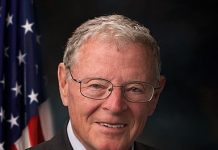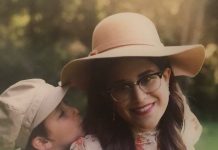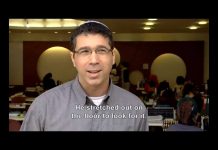By Rabbi Yair Hoffman
Rabbi Adin Steinsaltz, z’l, was a descendant of Rav Avrohom Weinberg, the first Slonimer Rebbe, one of the leading chassidic rabbis of the 19th century. He was a trailblazing translator of the Talmud, an author of numerous books, and a recipient of the prestigious Israel Prize in 1988. A ba’al teshuvah, he became a rabbi who was interested in bringing Klal Yisrael back to their birthright of Sinai. By and large, he was fabulously successful. Rabbi Adin Steinsaltz, z’l, had a profound impact on Jewish life and Judaism.
Rabbi Steinsaltz passed away at the age of 83, after battling pneumonia. He was humble and brilliant, and mourned by numerous segments of Israeli society. He was buried on Har HaZeisim and eulogized in the press by both the prime minister and the president of Israel.

He was also, perhaps, the only person in the world who faced criticism from both Reform rabbi Jacob Neusner, and, l’havdil, one of the leading Torah figures in the chareidi world, Rav Eliezer Menachem Shach, zt’l.
Rabbi Steinsaltz was best known for translating the Talmud into easy-to-understand modern Hebrew. But the translation did much more. It provided biographical sketches of each of the Tannaim and Amoraim mentioned in the Gemara. It provided details as to the animals and fauna mentioned there, too, as well as modern scientific takes on many of the concepts discussed in the Talmud.
In 1983, on the 7th of Iyar, Rav Moshe Feinstein, zt’l, gave a haskamah to the Gemara, naming Rabbi Adin Steinsaltz. But if one looks carefully at the text of Rav Feinstein’s letter, it is clear that he did not review all aspects of the Steinsaltz Gemara. Some of the explanations went against traditional understandings of the text. The Talmud tells us that a woman cannot get pregnant immediately subsequent to the first instance of intimacy. Medical opinion thinks otherwise, and Rabbi Steinsaltz gives a psychological explanation. That is just one example; there are many more.
Rabbi Steinsaltz began his translation project in 1965. His text didn’t start and end with Hebrew; it was translated into English, French, Russian, and Spanish. The nikud (vowelization) was also groundbreaking. It was such a good work that ArtScroll is said to have used it as the basis of the nikud for its Schottenstein translations.
He was bold in his translations as well. There is a blessing, mentioned in Berachos 58a, that is recited when seeing 600,000 non-Jews, but what type of non-Jews? Is it just idol-worshipping non-Jews or any type? Our texts have idol-worshipping ones. Rabbi Steinsaltz, based on the works of Rishonim prior to any censors, changed it to all gentiles in his edition. Gedolei ha’poskim with whom this author consulted agreed that this was the correct halachah.
The Lubavitcher Rebbe, also a recipient of attacks from Rav Shach, stood by Rabbi Steinsaltz. Rav Steinsaltz had become observant through the work of Lubavitch teachers. In 1960, a 23-year-old Adin Steinsaltz wrote to the Lubavitcher Rebbe that he was teaching in a few yeshivos in the Negev. The Rebbe wrote back to him asking for more information. It was not the first exchange of letters. Rabbi Steinsaltz was an adherent of the Rebbe and one of his most devout chassidim.
Rav Steinsaltz started yeshivas that educated thousands and thousands of Jews, even one in Moscow. He also completed a nine-volume work on the Tanya that explained the words of the Alter Rebbe of Chabad with unprecedented clarity. He was so active, so prolific, and so influential that it will take some time to gauge his true impact on contemporary Judaism.
There are rumors that he studied at Slonim because of his lineage and other rumors that his father had studied under the Chofetz Chaim in Radin. Rabbi Steinsaltz’s parents, Avraham and Leah Steinsaltz, were Polish immigrants to mandatory Palestine with avowedly secular left-leaning worldviews. Avraham fought against the fascists in Spain and also was a member of the Stern Gang (Lehi). Yet when young Adin was but 11 years old, his father hired a tutor, remarking, “I want you to be an apikores, not an am ha’aretz.” His mother adamantly refused to light Shabbos candles.
Young Adin immersed himself in Torah study and never stopped. He studied mathematics, physics, and chemistry at the Hebrew University in Jerusalem in addition to rabbinical studies at Yeshivas Tomchei Temimim in Lod and with Rabbis Dov Ber Eliezrov and Shmaryahu Noach Sasonkin. He also immersed himself in the writings and theology of Kotzk and Chabad theology and used his secular knowledge to augment his Torah studies. His explanations of the Tanya have been well-received in Chabad circles and beyond.
Throughout the years, Rabbi Steinsaltz managed to cultivate relationships with scientists, doctors, and top politicians. He studied regularly with prime ministers Levi Eshkol, Menachem Begin and Benjamin Netanyahu, mayors, and MKs. He influenced them significantly, bringing them closer to true Torah perspectives. Yehi zichro baruch.
Rabbi Hoffman can be reached at Yairhoffman2@gmail.com.















The letter reproduced does not at all say what R’ Hoffman says it does. He does not back down and does not apologize. He never retracted a word and all his books remain in print. He certainly never “apologized” for being a ba’al teshuva. And rightly so. The attack on him was political in nature, arising from the fight R’ Schach was engaging in at the time with the Agudah and Chabad, in which R’ Steinsaltz, who was not at all involved, became a convenient target. (Note the letter is addressed not to any of the people listed here but to the Eidah Charedit, which did *not* attack him.) The attack may also have been commercial in nature, to defend Artscroll from any possible competition. But it certainly wasn’t l’shem shamayim.